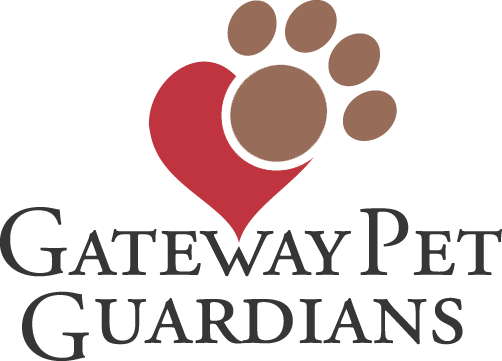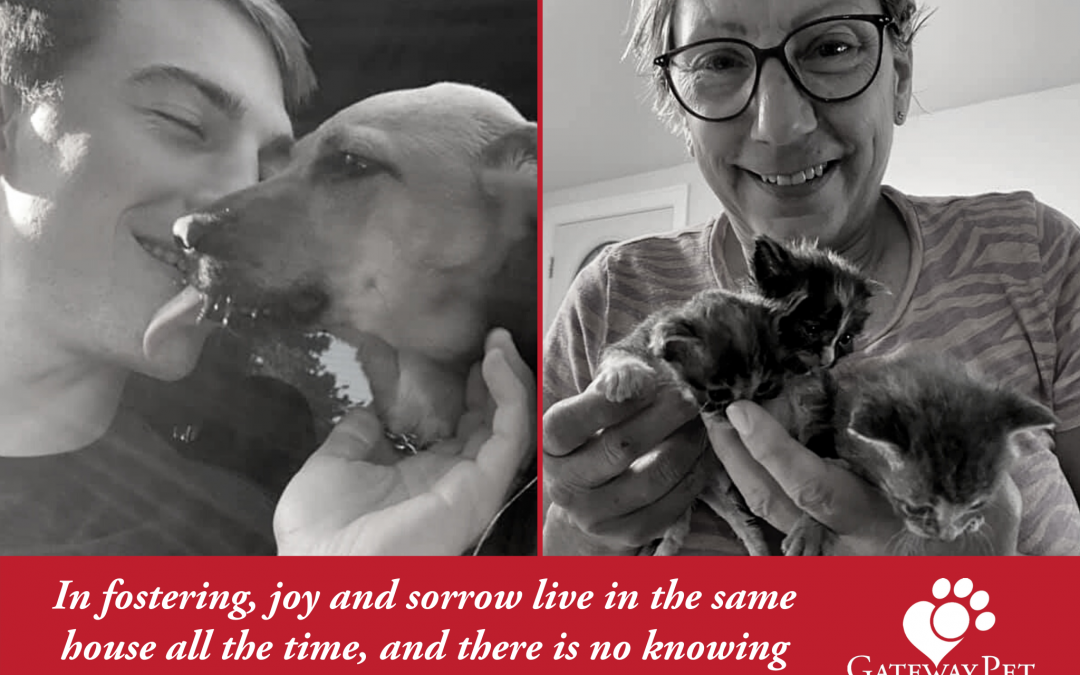From the desk of the Executive Director, Emily Stuart
A friend of mine fosters children (of the human variety). Recently, she came to visit Gateway Pet Guardians (GPG) and tour our facility. As we passed our Unicorn Foster Program Wall of Fame, I asked her to share her best foster pro-tip, something she would pass along to other potential foster parents. Her response: “don’t just tell them they are loved; show them.” The research on successful placements of children in foster care is ripe with lessons for those of us in animal welfare. As most of the country experiences drained pet foster capacity¹, refreshing our viewpoint on placement success could energize existing recruitment efforts.
The Foster Parent-Organization Relationship
One of the best predictors of a successful foster placement is transparent communication between the organization and foster parent about what a child needs and where his/her strengths and opportunities for growth lie². Everyone does better when well prepared. Foster parents express dissatisfaction with their experience if they are unable to reach staff quickly with concerns, feel as though they are bothering staff by asking questions, or feel scrutinized in their efforts to support children. Foster parents do best when we allow them to be the experts in their own space, and offer support instead of erect barriers.
Foster parents have a higher level of trust and openness to learning from staff who share their identity and have foster experience of their own. As we work to recruit new fosters in animal spaces, particularly those from diverse racial/ethnic backgrounds, it is important that we reflect this priority in our staffing as well. Research suggests that contact with existing foster parents is a key initial motivating factor for inquiring about fostering. Foster parents also report higher levels of satisfaction if they are involved in decision making about the child and appreciated/recognized by the placement organization³. Engaging existing foster parents in new foster recruitment and allowing them the autonomy to do what they think is best for an animal could enhance satisfaction and retention.
The Foster Parent-Foster Child Relationship
Children are most successful when they are able to stay in one home for a significant period of time. They do much better in a family-based care setting versus a group home. We find this to be true for animal fosters as well. Our furry friends experience fewer behavioral and physical health challenges when welcomed into a family versus kept on the adoption floor. Consistency implies security. Children new to foster care need to feel safe and secure in their surroundings. Entering a new foster home, whether it be their first or fifteenth, is an unfamiliar and frightening experience for children, and being able to recognize and attend to their needs is crucial[…] a sense of security might come from consistency within the home, particularly if a child has come from an especially chaotic environment⁴. Children in foster care are most successful when they are able to create relationships with all the people within a household, and be treated as a member of the family.
In trauma awareness training, we learn to reframe the question ‘what’s wrong with you?’ as ‘what happened to you?’ We recognize that people, and pets, make choices that influence their behavior based on previous experiences. For example, a child may hoard food if previously unsure when he will receive his next meal. Research indicates the best intervention is to assure children that their basic needs will consistently be met and to focus on collective problem solving versus punishment. Foster parents act as a guide for children to develop their ability to self-regulate and make healthy choices. Pet fosters are similarly responsible for course-correcting behavior concerns that may result from exposure to trauma through the use of reassurance, positive reinforcement, and consistency.
Perfect is the enemy of good
It takes a combination of several internal and external stimuli for potential fosters to follow through on taking on their first placement. There are also a number of reasons why someone would apply to be a foster and then disappear. The most critical factor in a prospective foster not continuing on their journey to placement is a fear of failure. Many also felt that their lifestyle wouldn’t be suited to fostering, or were told as much by agencies, because they had work commitments, or lived in apartments instead of houses. Sadly, much of this mirrors what we hear from pet foster parents as they begin to pursue an interest in fostering animals.
We need you
One of the most impactful quotes I read during my brief dive into the research was this: In fostering, joy and sorrow live in the same house all the time, and there is no knowing which one will pop up where, when, or why. Our GPG foster parents are the most important part of our shelter to adoption process. They also experience the peaks and valleys most acutely. We would not be the organization we are today without the hundreds of families who have welcomed foster pets into their homes of all sizes, shapes, and locations!
At the same time, there is more we can do to remove barriers to fostering, enhance recognition, increase foster autonomy, and transparently communicate. Most importantly, I hope that we continue to convey that there is no perfect foster “lifestyle,” and that success can look a hundred different ways. If you’ve considered fostering an animal, but were worried you wouldn’t “pass the test,” I encourage you to connect with us about foster opportunities at GPG. For more information, email foster@gatewaypets.org or visit our foster webpage.

Please contact Emily Stuart | emily@gatewaypets.org
¹ Human Animal Support Services
² Spielfogel, J. E., Leathers, S. J., Christian, E., & McMeel, L. S. (2011). Parent management training, relationships with agency staff, and child mental health: Urban foster parents’ perspectives. Children and Youth Services Review, 33(11), 2366-2374.
³ Sebba, J. (2012). Why do people become foster carers? An international literature review on the motivation to foster.
⁴ Blakley, T. (2020). Foster Parent Perspectives on Successful Placements in Care. A Closer Look in Unusual Times, 35.

